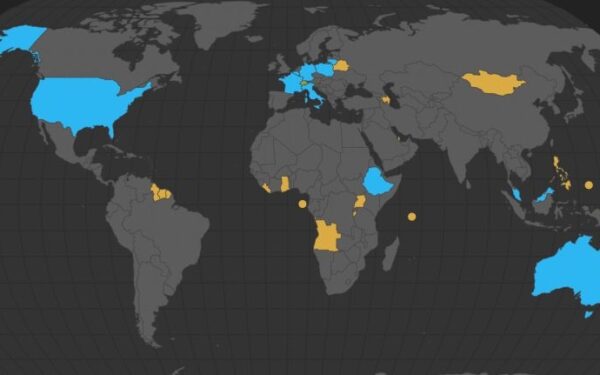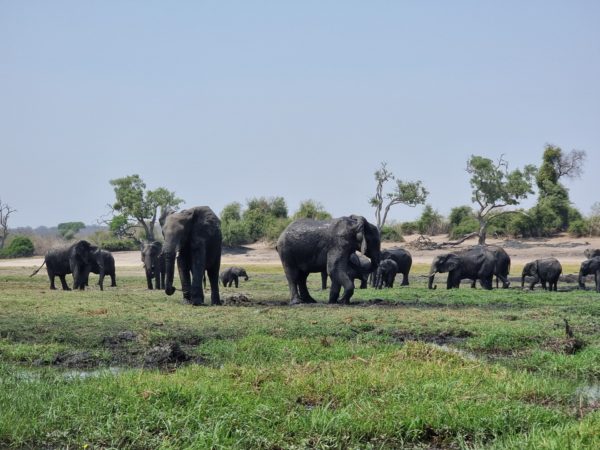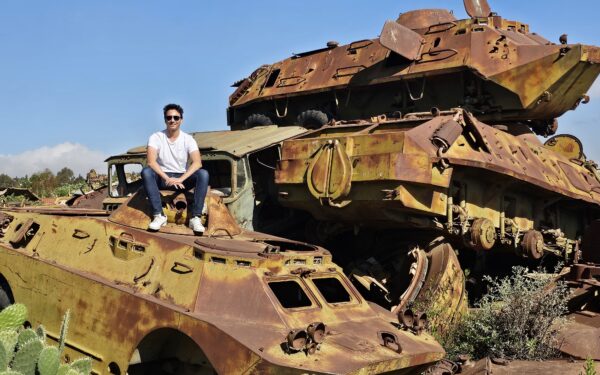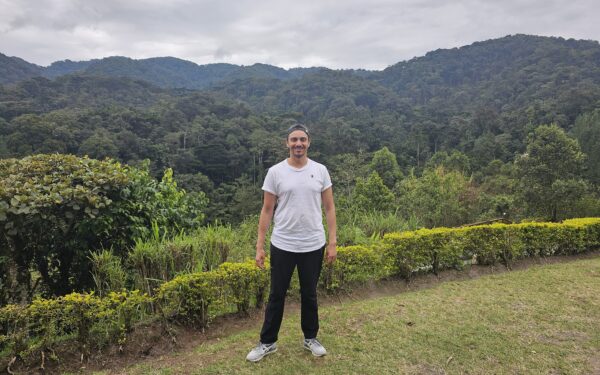Travel report: Ethiopia
Date of visit: October 2017
“Why the hell Ethiopia?” was usually the first question my friends and family asked, when I told them about my next travel destination.
Ethiopia is not a major tourist destination yet. The country lacks beaches and safari so that many tourists prefer Kenya or Tanzania in East Africa. Moreover, many people think that Ethiopia is dangerous. This is not true though, plus the country compensates the lack of beaches and safari with incredible nature and interesting culture.
There are other good arguments for traveling to the only African country that has not been colonialized during the scramble for Africa: Ethiopia is one of the safest countries in Africa, infrastructure is not as bad as in other parts of the continent, it’s cheap and the capital Addis Abeba has direct flights to numerous countries on five continents. Another big plus is that mass tourism has not arrived yet.
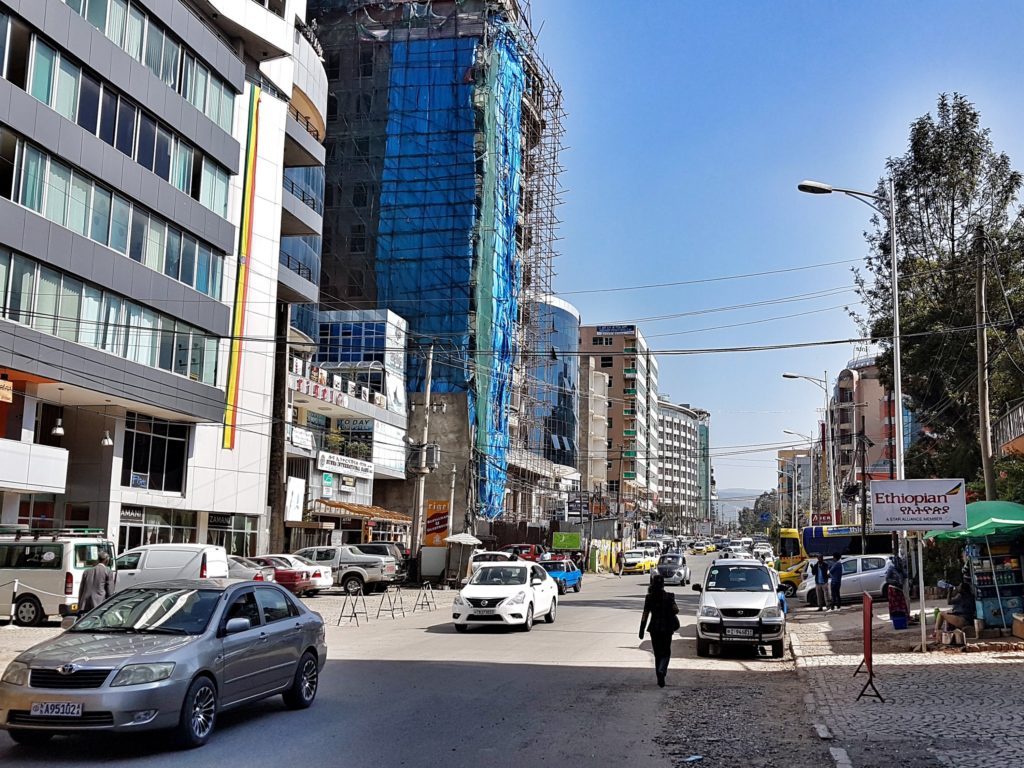
Planning the trip to Ethiopia
Travelers usually visit more or less the same destinations in Ethiopia: Lalibela, Gondar, the Simien Mountains, Harar, Bahir Dar, the Danakil Depression, Axum and the Omo Valley. Of course, most people also spend time in Addis Abeba, because the only international airport is located in the capital (well, there is another one in Dire Dawa but the amount of international flights is limited).
What places are the best depend on the traveler’s interest. People who are interested in history and culture might prefer Lalibela, Gondar and Harar, while travelers who want beautiful nature better choose the Simiens and the Danakil Depression. In my option, the best journey is a mix between the two.
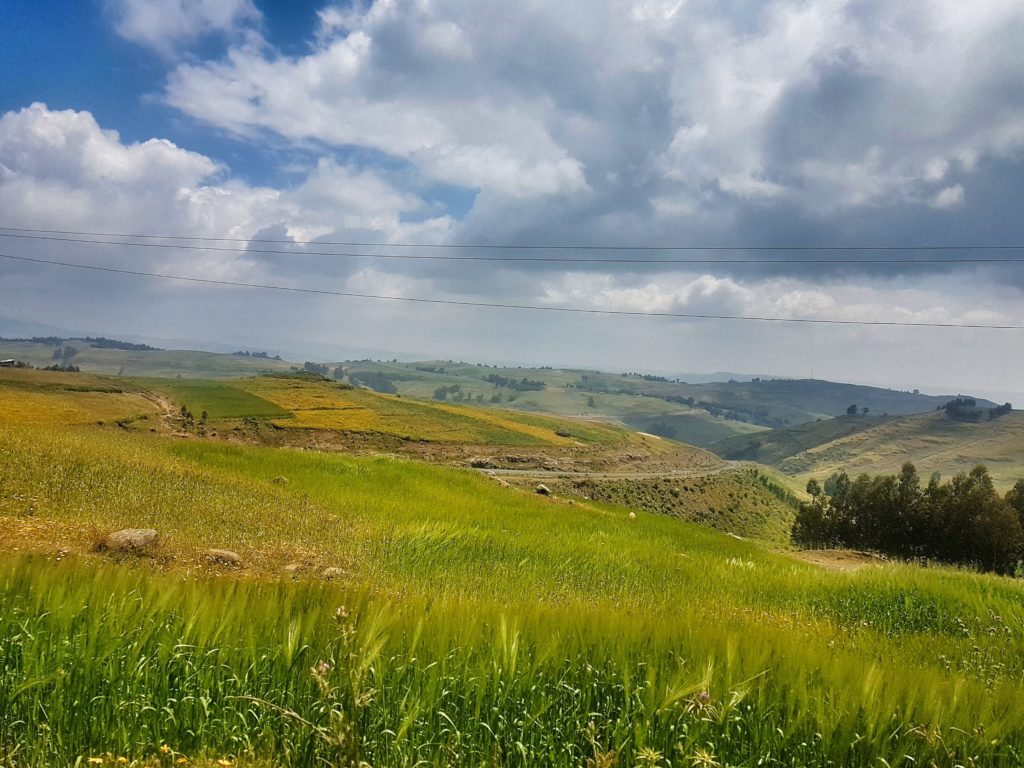
Ethiopia is a huge country. It is three times the size of Germany and it would take three or more realistically four weeks to see all the country’s major spots. I only had two weeks, so I had to prioritize. My original itinerary consisted of Addis Abeba, Bahir Dar, Gondar, the Simiens, Lalibela and the Danakil Depression. In the end, I had to change my route during my travels. Being flexible has become one of the most important part of traveling. Especially in Africa.
Traveling overland might be a fun and authentic way to explore Ethiopia, but it’s not the best option when time is short. Fortunately, traveling by plane is easy and cheap. It is better to book the flights directly in Ethiopia and not from home, as fares are much cheaper within the country than online. Moreover, if your international flight has been with Ethiopian Airlines, you get a discount of 50% for all the domestic flights. That’s a damn good deal, but there is a risk that the flights are not available at short notice. It happened to me so I had to reschedule the first half of the trip.
Welcome to Addis Abeba
I arrived in Addis Abeba early on Saturday. The capital is a pretty well-developed city for African standards. The roads are in good conditions and one or another skyscraper give the city a modern look. Addis Abeba is Ethiopia’s largest city (population: 3.3 mio.) and home of the African Union. Therefore, the city is often called the Brussels of Africa and Addis has the third most amount of embassies in the world after London and Washington D.C.
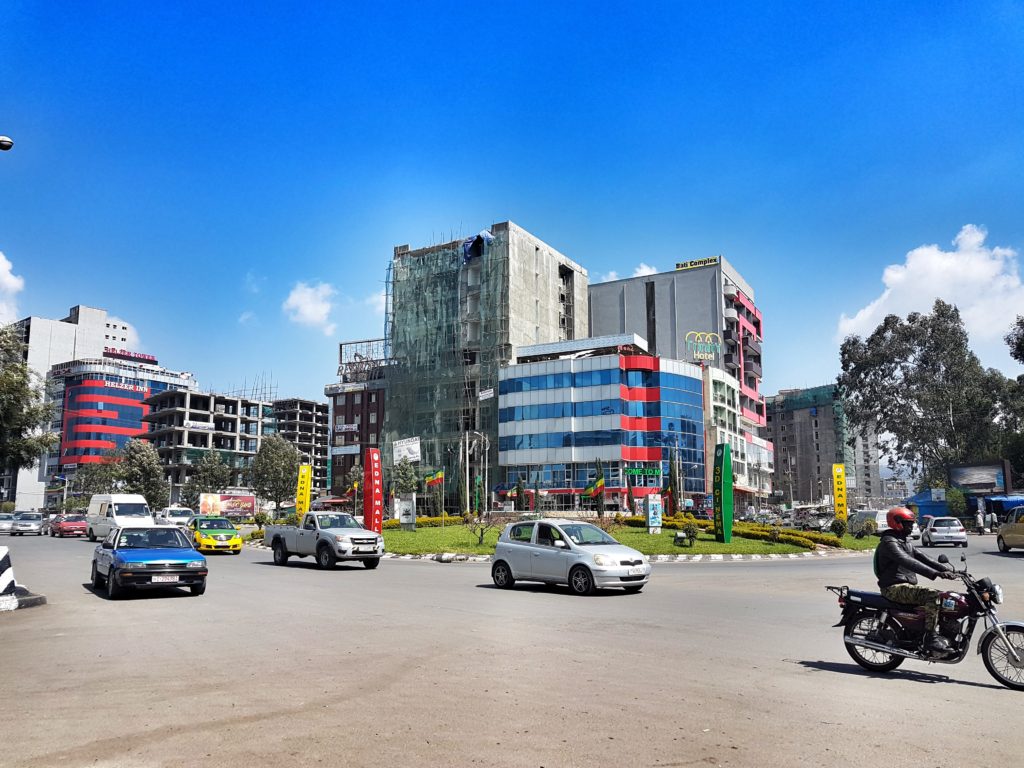
Unfortunately, I didn’t have a lot time in Addis, as I had to organize a few things like a local SIM card (took me almost two hours until I got it), my domestic flight tickets and the visa for Somaliland. Nevertheless, I still got enough time to see the Holy Trinity Cathedral, the Bole Quarter, Edna Mall and Yod Abyssinia, one of the most traditional restaurants in town. As a short summary; Addis is okay, not the most beautiful city in Ethiopia, but neither a bad one.
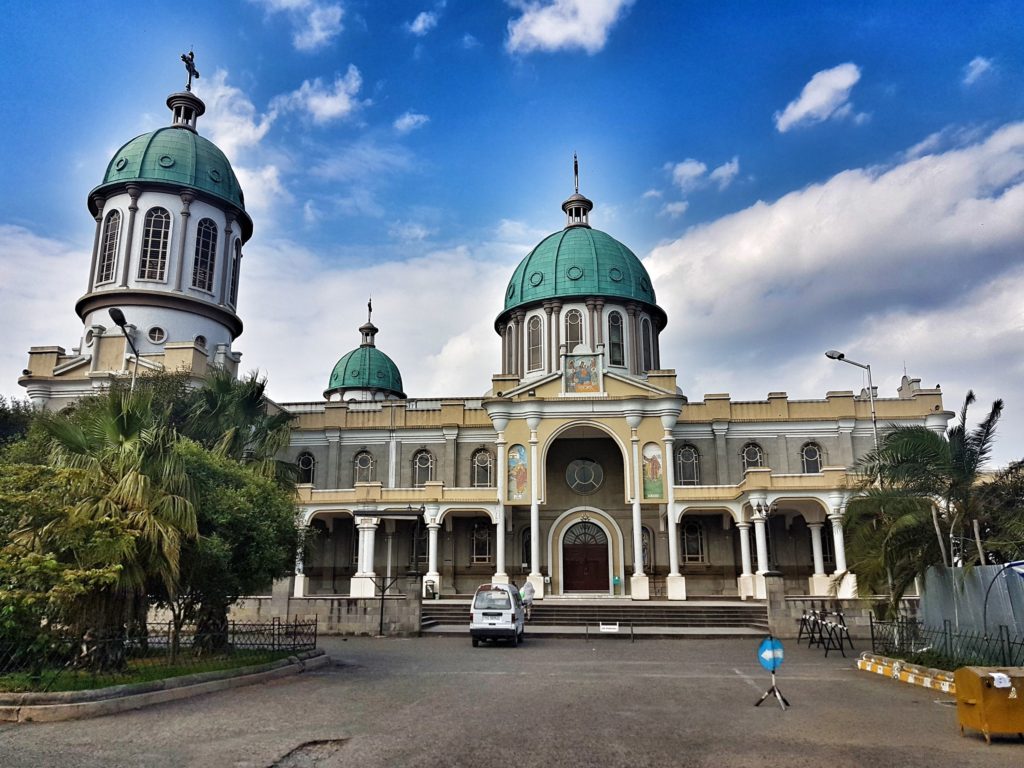
I still enjoyed my stay in the capital. It also didn’t take me long to get company. I met the guy who organized my Simien Mountains tour for dinner. He gave me some useful tips for my travels (e.g. that mobile internet is much faster when using a VPN app) and joined for a few drinks later. He also helped me to find a cheaper tour for the Danakil Depression than the one I booked a few weeks before back home.
The only irritating thing was that he wanted the money for my tour right away. I told him that I would pay everything the day the tour starts but he said he needed a deposit as a guarantee that I would go with his company. This felt strange to me. I have read several stories about people having a great time with a local guide but were ripped off eventually. That was probably not his intention, but I didn’t want to risk it. I told him I would call him the day after and I did that as soon as I passed security at the airport. I apologized that I forgot about him and said that I will pay the money as soon as I get there.
By the way, nightlife in Addis Abeba is pretty good. There are numerous bars and nightclubs open until the early morning hours. In Africa, the mix of people in bars and nightclubs is always more or less the same. You will see the upper class of the country, a lot of expats (mostly NGO workers), hookers and a few tourists. It’s sleazy but still fun. I came back to my hotel in the middle of the night and my time in Addis had come to an end.
Up to the North – traveling to Gondar
The next morning, I was sitting in the domestic terminal of Addis Abeba Bole International Airport. The terminal was small and not very pleasant. There was one restaurant at the gate that had a huge poster with a pizza as an advertisement. “I will take a piece of pizza,” I said to the waiter. “We don’t serve pizza,” he answered. “Okay, then why do you have a picture of a pizza here?” – “I don’t know.”
The flight to Gondar took only an hour. Someone from the hotel picked me up at the airport, which is located about 20km from the city center. “We Ethiopians are gifted with the most beautiful skin in the world. Our skin is like chocolate!” the driver said. “Not like the skin of the other Africans. Our skin is much more beautiful,” he swarmed.
Talking about beauty, I was impressed by the nature of Ethiopia. The country is greener than many think. We were driving along endless green fields under the blue sunny sky. It was marvelous. Thus, it is even more surprising that many people think about drought and famine when you ask them about Ethiopia. This is only half the story though. There was drought in Ethiopia but only in certain parts of the South. Most of the country is green.
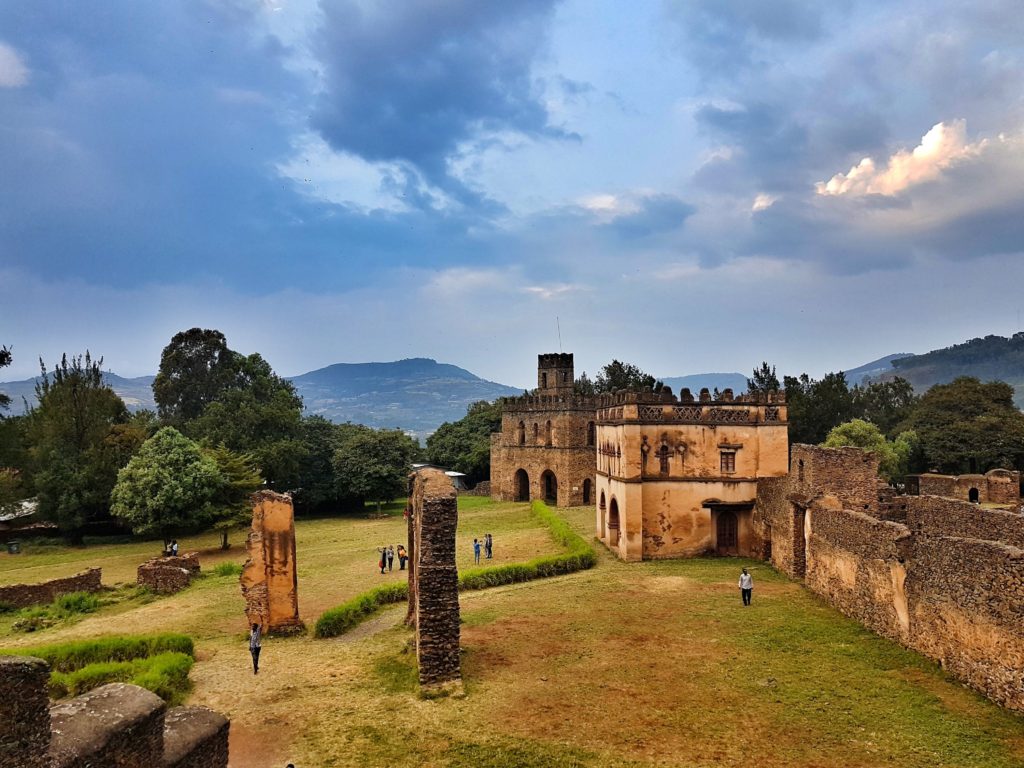
Gondar is a small city in Northern Ethiopia, which turned out to become my favorite one in Ethiopia. Many people go to Gondar to do the Simien Mountains trekking from there, and so did I. Things in Gondar are very different from Addis. Gondar feels much more rural than Addis. It is also a small and walkable city.
What surprised me the most was that I didn’t see many white people in Gondar anymore. As a consequence, you are a bit of an oddity and the locals stare at you. This goes also for other cities in Ethiopia. To be honest, I have not been in another country, in which the locals stared at me as much as in Ethiopia. People are very friendly though and some of them greet you on the streets.
Gondar has also some sights and the best one is Fasil Ghebbi, a fortress-city right in the center. Entrance fee is a bit more than 7 Dollars but it’s worth it. It’s also worth taking a guide which doubles the price, but the stories about the castle are amazing and I believe one misses something without an explanation.

Although I’ve spent only a short amount of time in Gondar (before and after the Simiens-trek), I really felt comfortable in this laid-back city. Gondar should be part of every itinerary therefore.
The Simien Mountains – a must do in Ethiopia
Although my short stay in Gondar was very nice, trekking in the Simien Mountains was the first real highlight of my tour. Travelers can visit the National Park as a one day trip from Gondar, some people even do 10-day treks. Personally, I think going to the Simien Mountains just for one day isn’t worth it. It’s a four hour drive from Gondar that doesn’t give enough time to see a lot. I chose the 3 days and two nights trek. However, I believe that the two best things (one viewpoint and the waterfall) are done in day 1 and 2. So if time is short, the 2 days tour is a good choice too. It’s also possible to go trekking just by yourself, but I think it’s way more fun in a tour.
Joining a group of fun people on a tour is always a matter of luck. The group I was with in the Simiens was one of the best ever with 8 people from all over the world. Our group was led by one tour guide and three guards, each equipped with an AK47. “Are they here to protect us from the hyenas and leopards?” I asked. “Well… no…” the tour guide answered. I went: “So, why are they with us?” – “Actually just for job creation,” our tour guy admitted. There are indeed dangerous animals in the Simien mountains, but the chances one will see them are very small.
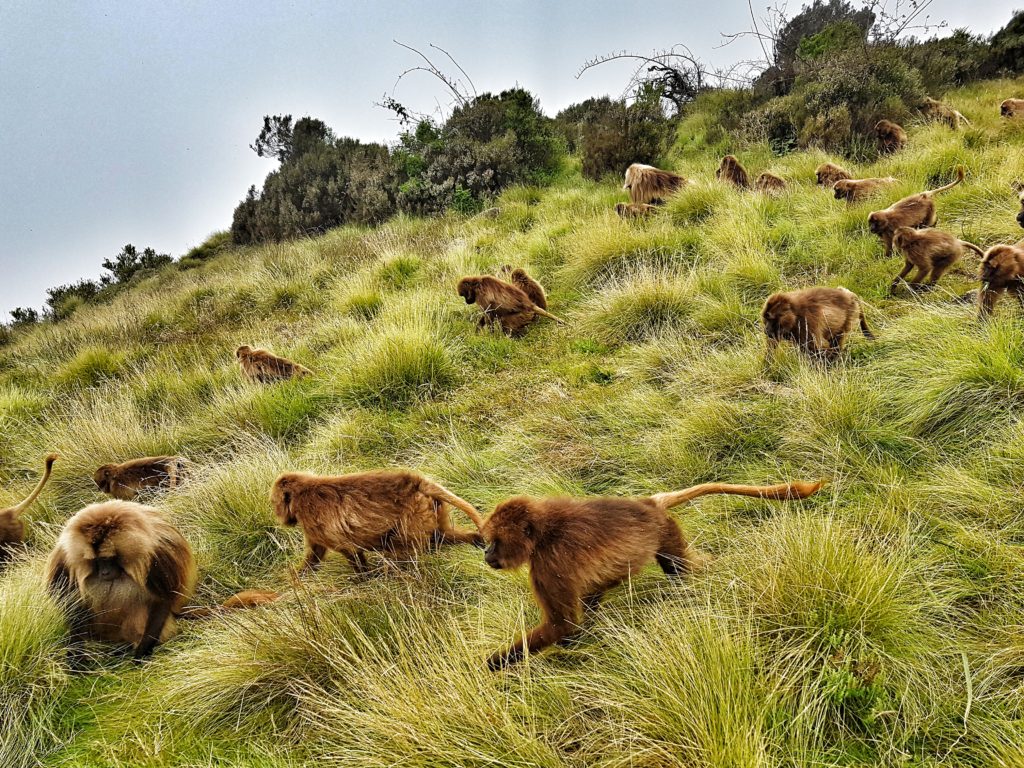
It is guaranteed that you will see monkeys in the park though. Sometimes even a group of 500 apes. And the best thing is that you can be standing in the middle of them without getting hurt. The gelada baboons are harmless to humans unlike their counterparts in South Africa. Perhaps, it’s because they are vegetarian and the South African baboons are not.
Worst night in my life
Accommodation in the Simien Mountains is very basic and the first night was the worst in my entire life. We slept in tents at an altitude of 3,200 meters and although the rainy season was over, heavy rain came over us as soon as we arrived at the camp. I shared my tent with Colin, a guy from Dublin, and the tent was already wet when we went to sleep. In the beginning, I thought it wouldn’t be too bad but the rain did not stop and more water came in. It was not only cold but also loud from the raindrops smashing on the tent just 10 centimeters above our heads.
I had my warmest clothes on but after a while I was soaking wet as I was lying in a huge puddle that got bigger and bigger every hour. It was terrible and at 2 AM in the morning I couldn’t bear it anymore. Fortunately, there was a stone hut near the tents where the staff was sleeping. It was even colder in there but at least I wasn’t affected by the rain anymore. The staff members were amazing. They provided a place to sleep and made a fire as well. I wasn’t the only one who had a pretty shitty night, two other guys joined just a few minutes later.
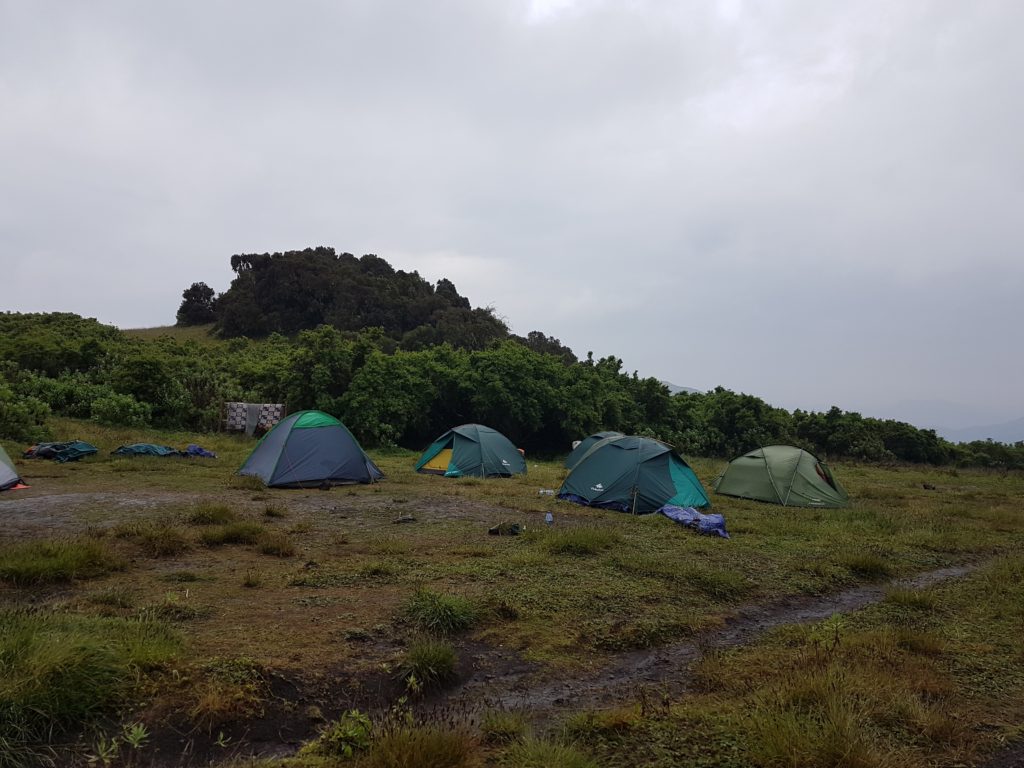
I was completely destroyed in the next morning. I did not sleep more than 1-2 hours and all my clothes in my backpack were wet. “Someone said ‘f*ck’ over and over again!” said the Italian girl. “Yeah, that was me.” I answered. Two of our group did the 2 days trek and were leaving after lunch and I was thinking of joining them. I was afraid that I would get sick after a night without proper sleep and with wet clothes only. And sleeping in a tent for another night was out of the question.
When I told the tour guide that I was considering going back to Gondar, he tried to convince me not to go. Obviously, he was afraid that I would ask for a refund, so he assured me that they would dry my clothes and that I could sleep in a lodge. Besides, some of the guys told me not to be a pussy. I didn’t need much time to think about it.
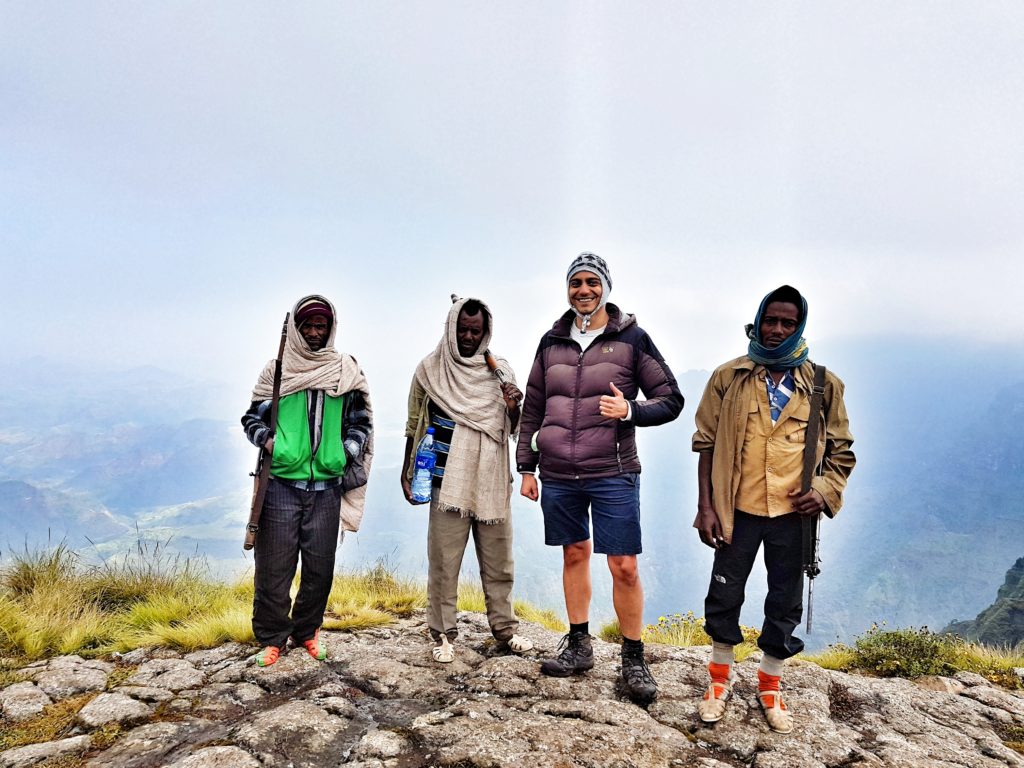
We trekked for 7 hours on the second day after trekking 5 hours on day one. 5 more hours would come on the third and last day. Generally, this trekking tour was pretty tough. Altitude was a real issue that I underestimated. I did a lot of treks in Switzerland but not at 3’200 meters. The air gets very thin up there and the first hour of the trek every morning was by far the worst. Sometimes, I really thought that I couldn’t continue anymore.
We finished the day at the next camp at 3’600 meters, where the tour guide told me that I “would have a better tent tonight”. This was not what I wanted to hear. “Come again?! Sleeping in a tent is not an option for me anymore. I would have left if you didn’t promise that I could sleep in a lodge!” I was upset. Finally, I had to pay 150 Birr for the lodge. He never mentioned that I would have to pay for it, but I couldn’t care less about 5 Dollars. The night before was simply too dreadful.
I shared my room with the tour guide and another Ethiopian. An old man in the room next to ours was coughing so badly that I couldn’t fall asleep, although I was terribly tired. ‘At least he’s not in my room,’ I thought. Well, Colin was in that room. Too bad for him. However, I did not have much luck either. After waking up, I saw plenty of small red bites all over my legs. I panicked! Bed bugs? No, the bites came from fleas. My legs looked ravaged. That was the price I paid for not sleeping in a tent anymore. Fortunately, I didn’t take them with me when we left the lodge.
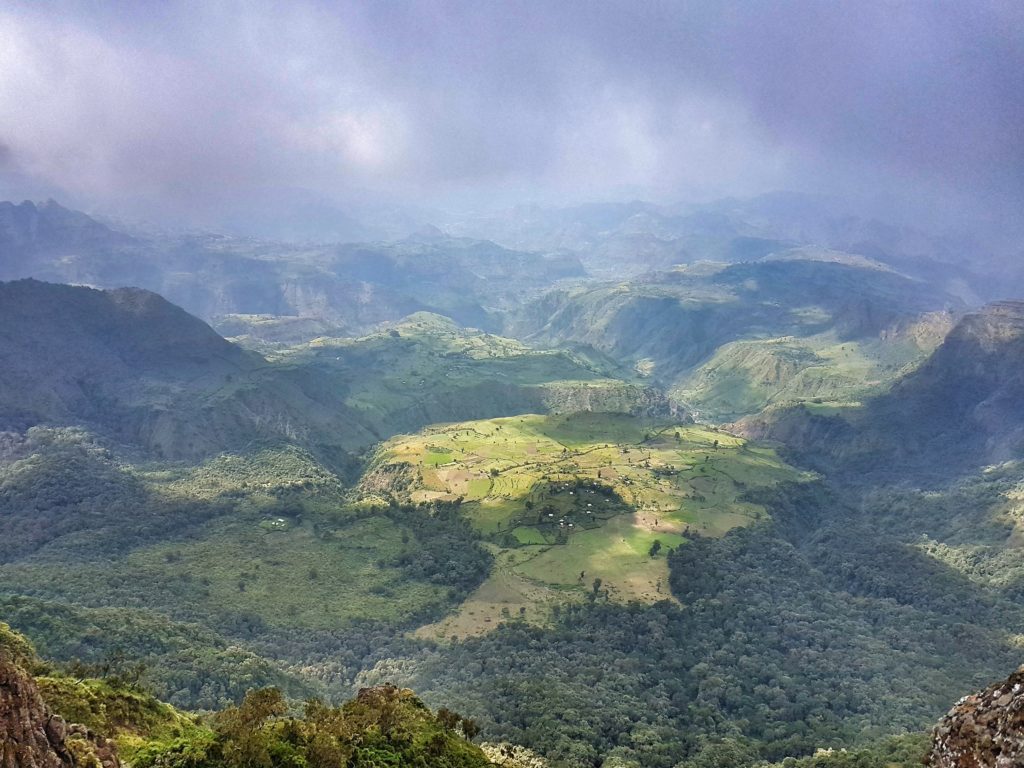
We finished the tour after the final five hour trek the next day. I was exhausted but happy. This tour was very cool, I was spoilt with beautiful nature, great people, wild animals and a story about the first night in the tent that I will tell my grandchildren someday. The Simien Mountains are a must do when in Ethiopia. Just don’t do it in one day.
Ethiopian cuisine
I lost weight on the trekking tour. I have no idea how much calories I had burnt in this three days but probably a lot. The food on the tour was acceptable. However, we only had one proper meal per day, a sandwich for lunch and cereals for breakfast. Therefore, I couldn’t wait to get a proper meal when I was back in Gondar.
The Ethiopian cuisine is quite interesting, as you will find traditional food next to Spaghetti Carbonara or Pizza. It’s a remnant from the Italians when they tried to colonialize the country. Funnily, the Ethiopians list Italian food as their national dish. They only differ between traditional and non-traditional food. The traditional food has the reputation of being one of the best in Africa. All dishes are served with injera, a sour-dough bread that you use as a spoon. Usually, there are many toppings on the injera, mostly meat with spicy sauces. It wasn’t bad actually, but I didn’t become a fan of the injera. It got so boring to me that I couldn’t eat it anymore after a few days.
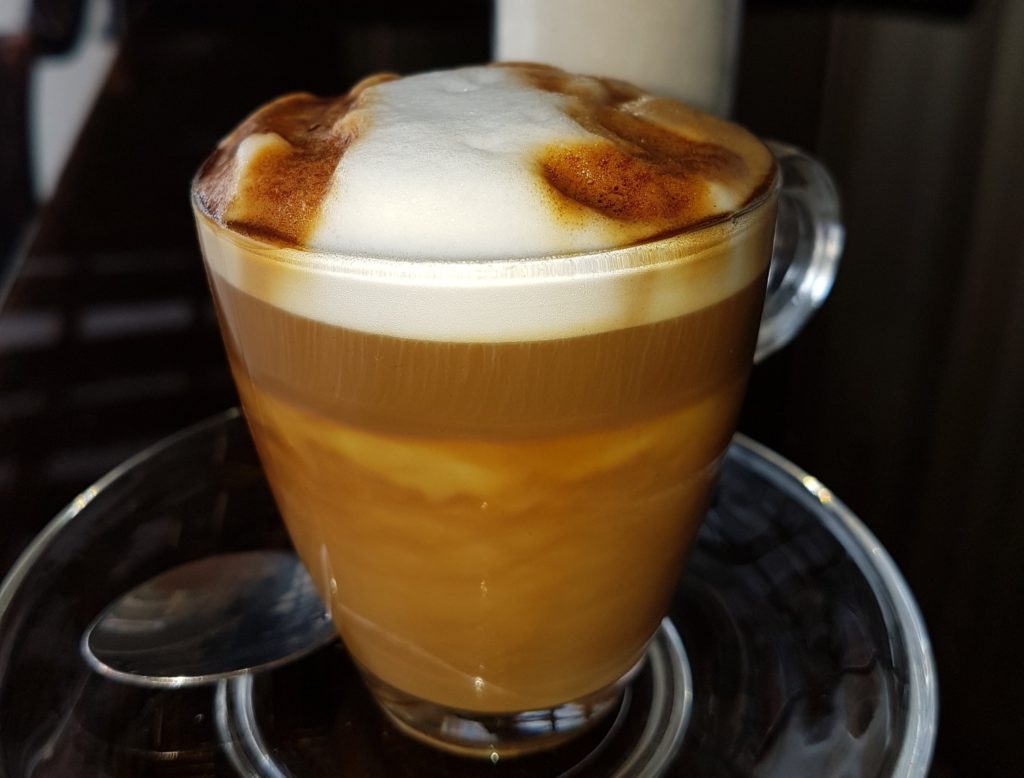
On the plus side: Ethiopia has the best coffee in the world. Ethiopians don’t just drink coffee, they are doing it in a ceremony. As a coffee junky, I still miss the Ethiopian Macchiato. It’s indeed one of the best in the world.
Travelling to Bahir Dar, the Ethiopian Riviera
My next destination was Bahir Dar. The city is also known as the Ethiopian Riviera, as the city is located next to enormous Lake Tana. Even though my fellow trekking friends in the Simiens told me that the minibus ride from Gondar to Bahir Dar is quite painful, I opted for this option. At least once I should travel overland in Ethiopia. I arrived around noon at Gondar’s bus station, where 3-4 Ethiopians almost started to fight each other, as all them wanted me in their minibus. Understandable, as I probably paid 5x times the price the locals paid. Anyway, it was still cheap. It cost me 5-6 Dollars for this 4 hour-ride.
Although some call it Ethiopia’s most beautiful city, Bahir Dar was the place I liked the least in Ethiopia. I didn’t feel as safe as in other cities and I have seen much more touts in this city than anywhere else. Nevertheless, I made some new friends again when I joined a Lake Tana boat tour. The tour was underwhelming, but the other travellers were great people.
Lake Tana is actually an ugly sewer. The water is brown and full of trash. On the tour we visited a few islands and peninsulas with monasteries. The problem was that each monastery looked exactly like the previous one and we had to pay an entrance for each of them. We were also promised to see hippos in the lake, and so we did. However, you could only see the tips of their heads. Disappointing again and I would rather recommend visiting the Blue Nile Falls. Unfortunately, I didn’t have time for that anymore.
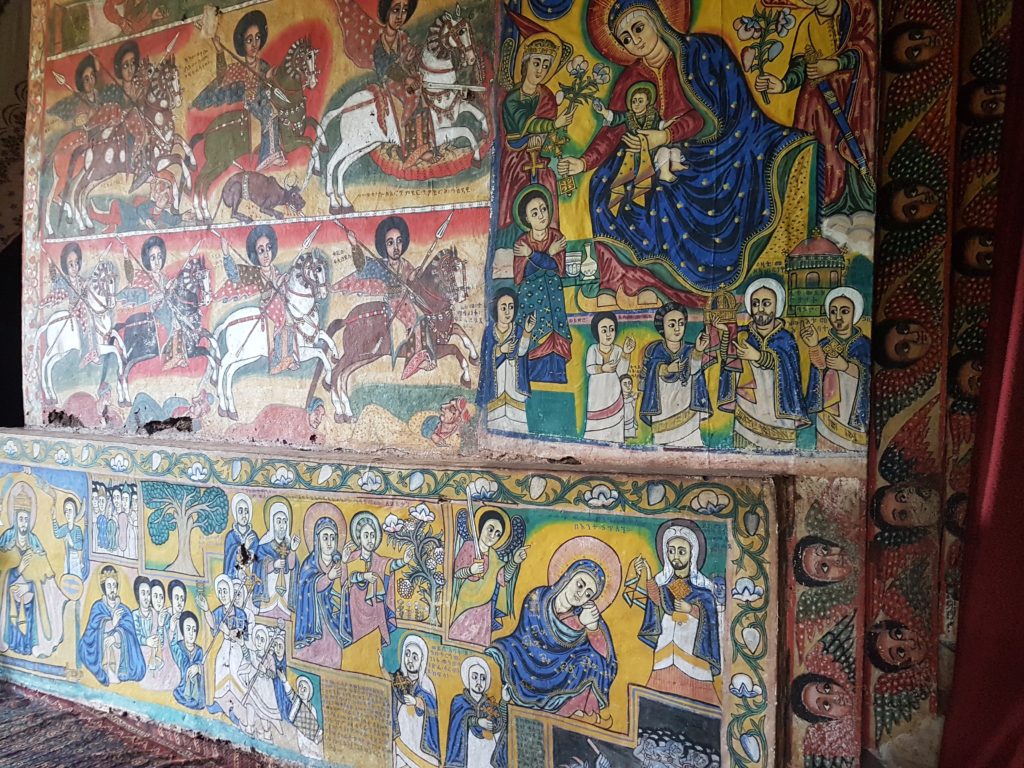
Nightlife wasn’t bad though. The other guys from the boat trip asked me if I would join them to a bar with traditional dancing. I went to traditional dance shows in other countries and most of them sucked, but this one was an exception. It was a tiny bar packed with dozens of people around a small stage. People were performing and the crowd went crazy. It felt like in a football stadium and was one of the most memorable evenings in Ethiopia.
It was only a short stay in Bahir Dar and I left this city after two days. The manager of my hotel drove me to the airport. On the way, he donated some money to people who collected for a new church. “Where should we go on Sundays if we don’t have churches?” the manager rhetorically asked. Religion is very important in Ethiopia. Masses begin very early on Sunday morning. They usually start at 5 AM and end at 10 AM. Many Ethiopians, at least the Christians, participate on masses every weekend.
I did not have time to attend a mass and neither would I if I had. Time had come for the big finale of this trip.
The best comes last: the Danakil Depression
I arrived in Mekele, Ethiopia’s second largest city, the next afternoon. I saved the best for last, as I always do when travelling. A trip to the Danakil Depression was the end of my tour in Ethiopia. The Danakil Depression is the second lowest point on the African continent and the hottest inhabited place on earth, reaching more than 50 degrees in some months. This area is famous for its weird landscapes and therefore one of the most visited places in Ethiopia, although one of the most expensive ones to travel.
The Danakil Depression is very close to the Eritrean border. As both countries, Ethiopia and Eritrea, are officially having a war, this area is a conflict zone and it is only possible travelling there with a guided tour. Apparently, some tourists got killed there back in 2005 and a group of French people just disappeared near Erta Ale Volcano and never came back. Therefore, armed soldiers and policemen accompany all the tours.
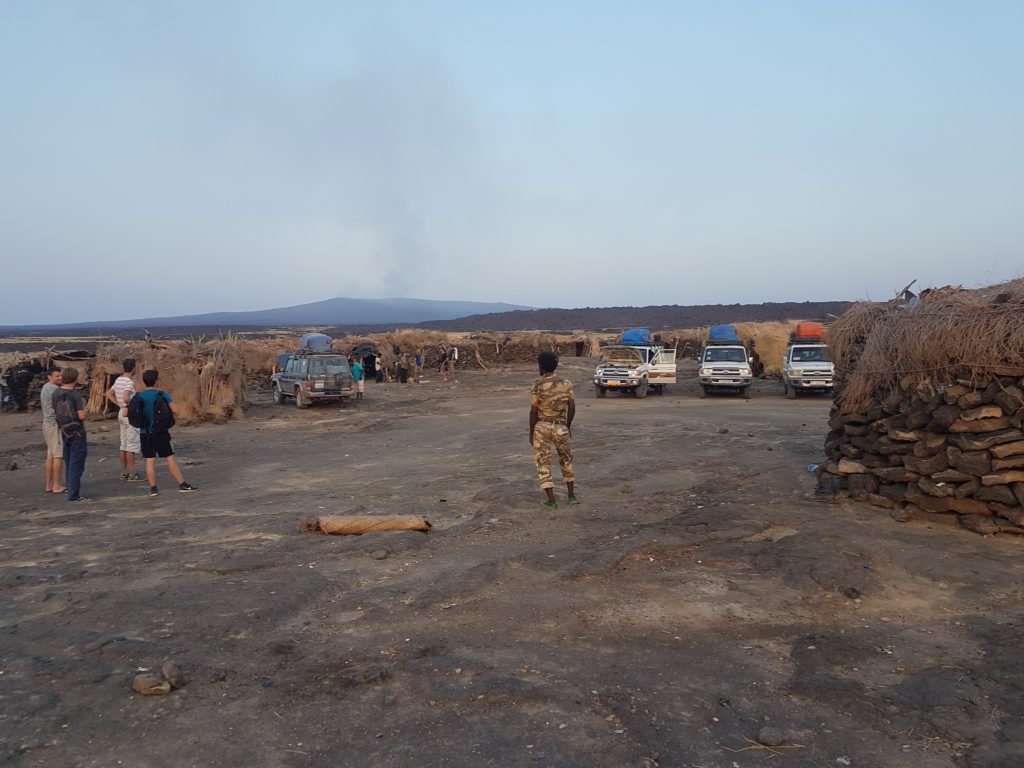
As soon as you arrive in the Danakil Depression, you don’t care that much about safety anymore but about the heat. It’s really hot, even at night. We arrived in the early evening at ourfirst camp. We had dinner there and shortly after we did a trek to the Erta Ale Volcano. It wasn’t steep, but walking up there for almost four hours with still 35 degrees was a real challenge. I was an idiot, as I took a backpack with me. Every kilogram on your shoulders is one too much.
A young policeman was getting on my nerves by constantly yelling “Yalla! Yalla!”, as soon as I stopped for a short break. “Yalla yourself!” I replied. My remark didn’t amuse him. Usually, African policemen have absolute powers and can do almost everything they want without someone giving them daring answers. He was trying to give me a bit of a hard time afterwards, but he couldn’t do anything. I think it wasn’t in his interest that I complained about him to the tour operator.
By the way, all tour operators do the same route, a few of them just do it with less people. Anyway, I recommend going with ETT, as this is the cheapest tour (expect to pay ~300 USD for three days).
Erta Ale and Dallol – two of the most spectacular things I’ve ever seen
Erta Ale was one of the most spectacular things I have ever seen. You are standing on top of the Volcano, watching the lava just about 60 meters beneath you. Apparently, there are only six volcanoes in the world that offer a spectacle like that to the visitors. We watched the spectacle for 45 minutes and went to bed afterwards. it was almost 1 AM and we had to get up before sunrise at 4.30 AM. A short night like that was terrible, but walking 3 hours back to the camp with temperatures of 45 degrees was a no go. It was still very challenging, as the heat was almost unbearable even at 7 in the morning.
(Update regarding safety, January 2018: German tourist shot dead during a visit to Erta Ale Volcano)
We spent most of day two in the car. Sounds bad, but you couldn’t stay outside too long anyway. We went to a salt lake for a swim. Most of us went in the water without taking off the clothes, as they would dry in less than 20 minutes afterwards. It was a day full of driving and we went to bed early again. You always get up very early in the Danakil Depression, when the heat isn’t that strong. We left at 5 AM on the third and last day and it was time for the highlight of the whole trip in Ethiopia: Dallol.
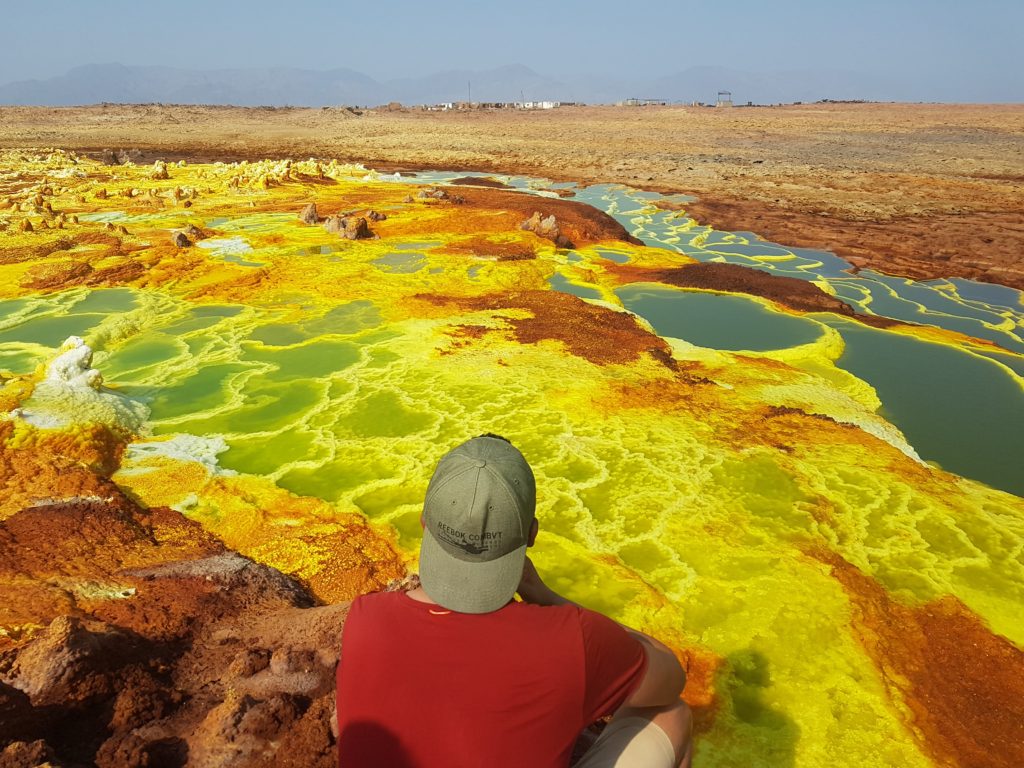
Visiting Dallol is certainly a unique thing in the world. The landscapes are so surreal, it’s like being on another planet. You have to be careful though, as you could lose your face when stepping into the acid. We did not only visit Dallol, but also Lake Asale and a camel caravan. Other travellers told me that the program of day 3 will be split into 2 days, when you’re on the four days and three nights tour. We did a bit too much on the third day, however I did not want to spend another day in the Danakil Depression. As spectacular as it was, it was also physically very challenging.
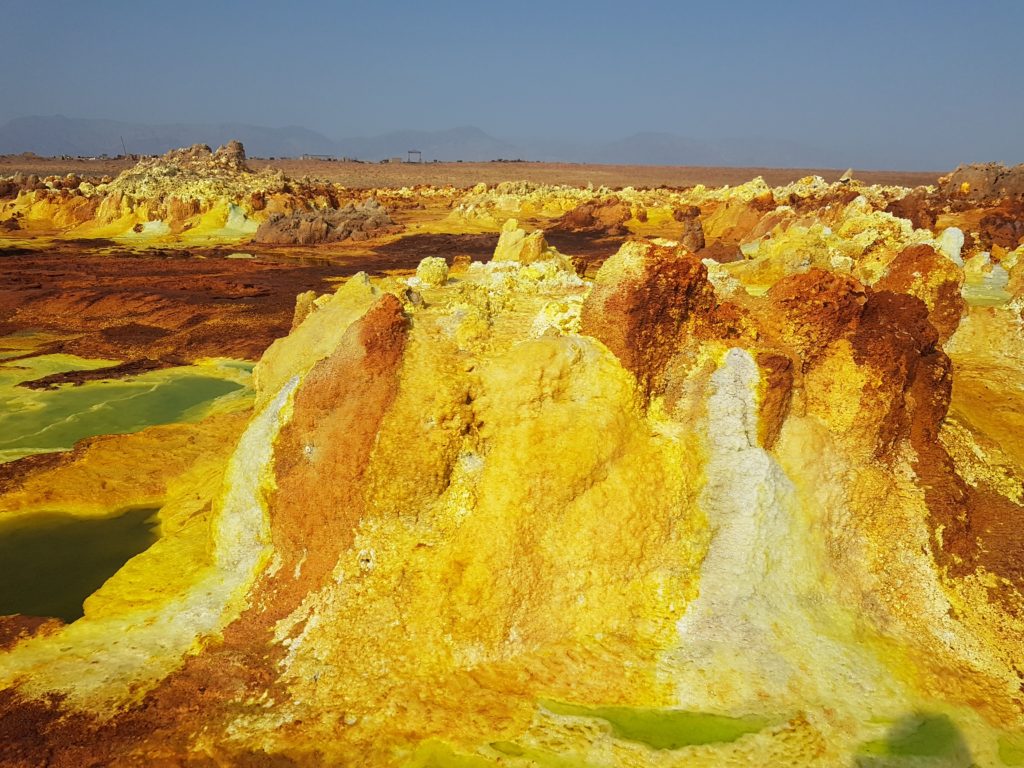
My travel experience in Ethiopia
Gosh, what a trip, what a country. Is Ethiopia a worthy travel destination? Absolutely. Ethiopia is influenced by the Western, the Arabic and the African world, but still has its own character. It’s a country with incredible landscapes, more or less good infrastructure, decent food and welcoming locals. And one of the best things is that it’s ridiculously cheap. The only expensive things are the tours, especially the one to the Danakil Depression, but it’s still affordable. That makes Ethiopia one of the best countries for backpacking.
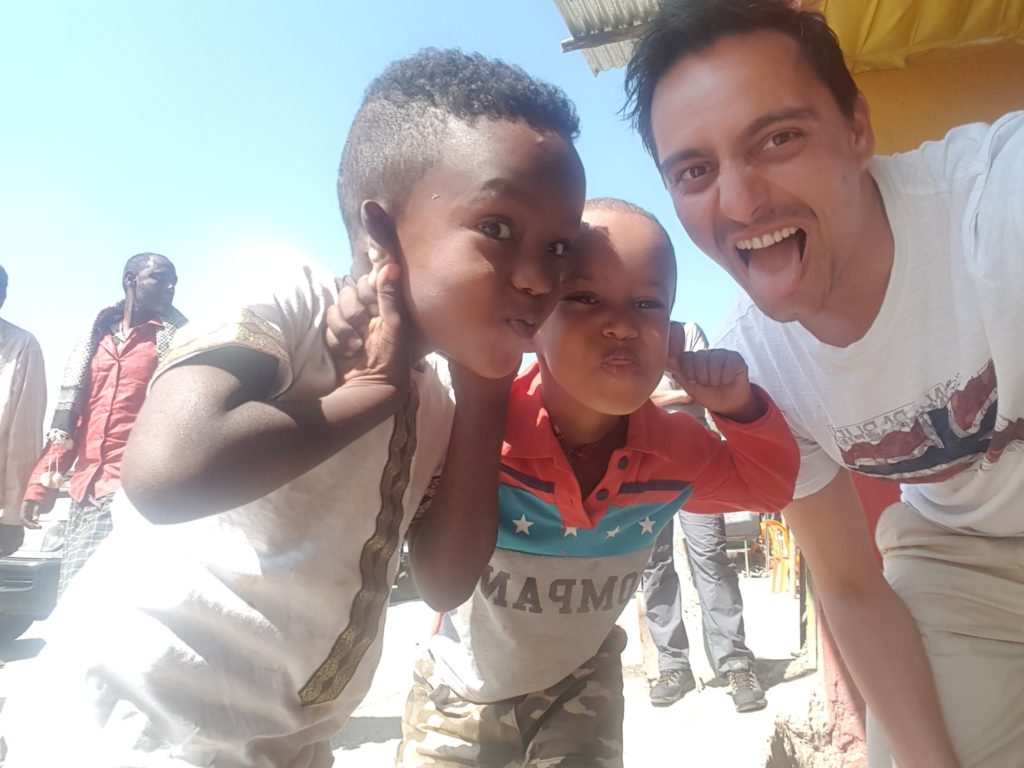
Of course, I haven’t seen the whole country. I missed Lalibela, Axum and the South. Nevertheless, when I heard stories from other travellers, I only regretted skipping Lalibela. Their stories from Axum and the South didn’t sound as these are must see-places. Especially the Omo Valley didn’t get good ratings from the travellers I met. They complained that visiting the tribes in the South is like going to the zoo, as these tribes do a show for the visitors. All in all, it’s far from an authentic experience.
It’s gonna be interesting how tourism in Ethiopia will be in 10 years. As long as the country stays stable, tourism will rise. Right now, Ethiopia is still a relatively untouched country, which makes travelling even more fun. Anyway, Ethiopia is a great country for an adventure but not for relaxing, especially if you do the Simien Mountains- or the Danakil Depression-tour, but it’s worth all the effort. Could Ethiopia be the next big thing in Africa in the next five to ten years? I wouldn’t be surprised.
Find the travel reports of the other countries I’ve visited here!
